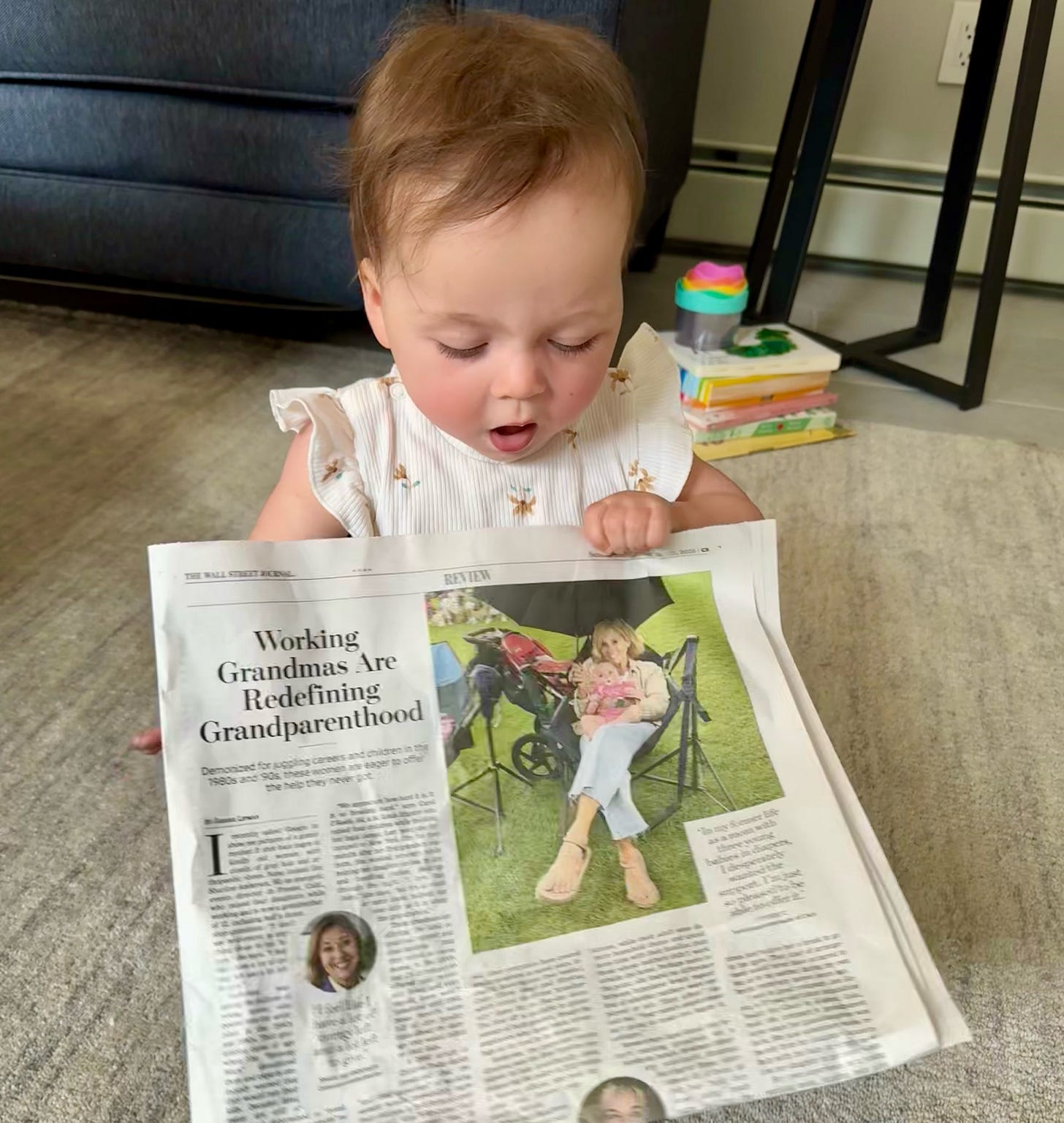WSJ: Working Grandmas Are Redefining Grandparenthood
My latest Wall Street Journal essay looks at the young working moms of the 1980s and 1990s (I was one of them!) who are now working grandmas.
Working Grandmas Are Redefining Grandparenthood
Demonized for juggling careers and children in the 1980s and ‘90s, these women are eager to offer the help they never got. See WSJ for the full article.
By Joanne Lipman
July 25, 202
I recently asked Google to show me pictures of a grandmother. It shot back pages of kindly old women with clouds of gray hair and orthopaedic shoes. None looked like Sharline Andersen, 60, an energetic events director in Fresno, Calif., who raised four daughters while working and is now a grandmother of 12, including half a dozen step-grandkids. “I don’t see retirement as anything close to my future,” she says. “I feel like I have a lot of energy left and a lot left to give.”
Andersen was among the millions of young moms who poured into the workplace in the 1980s and 1990s. Their generation came of age when the “Mommy Wars” demonized them and experts ominously warned that they would ruin their kids. Decades later, many are still at work—and determined to “break that cycle” of “doom and gloom” as Andersen puts it, now that their grown kids are becoming working parents themselves.
Andersen sees her role as “validating [her daughters] as moms” and setting an example. “I’m grateful that my daughters have been able to see me in a career,” she says, and now “see that you can be in your 60s and be a grandmother and still be very active in their lives, and still have a very strong and successful career.
Like Andersen, most Gen X grandmas are in the workforce, as are close to half of Boomer grandmothers, according to AARP, an organization that represents older Americans. These women are redefining grandparenthood, managing to be both more hands-on with the grandkids and more professionally ambitious than previous generations. In some cases it’s a financial necessity, given how child-care costs have well outpaced inflation.
But there’s an added, often overlooked, dimension: These grandmas remember all too well the struggles and stigmas they faced, and they are determined to ease the way for their working-parent kids.
“We appreciate how hard it is. It is so freaking hard,” says Carol O’Keefe, 64, a St. Louis litigator who raised four children while building her legal career. Last year, she decamped to New York City for two months after her first grandson was born. She worked remotely while helping her daughter-in-law by day and handling infant feedings through the night. “I love that baby,” she says, “but it’s as much or more about helping out your kids as it is about the grandbabies.”
These grandmas are offering the kind of practical support and cheerleading that they lacked as young moms. In the 1990s, just 2% of companies offered paid maternity leave, and even unpaid leave wasn’t mandated until 1993. News reports were full of dire predictions about the damage they would inflict on their kids.
A 1990 article in Children Today darkly predicted that the “unbridled careerism” of working women would irreversibly harm their children. A 1991 Fortune cover story asked, “Can Your Career Hurt Your Kids?” The answer: “Yes.” By 1998, an Arizona public official declared in this newspaper that two-career families are “a profound tragedy whose bitter fruit will be reaped for decades to come.”
“Good grief, it’s amazing our kids are alive,” laughs Christi Shoppach, 62, an executive assistant with the cybersecurity firm SentinelOne.
Please go to WSJ.com to keep reading



Thank you for writing this essay. Well said. My grandfather was still working into his Eighties. He was a practicing attorney with his own law firm. I remember seeing him go next door to the law firm during our visits. The law firm was next door to his house.